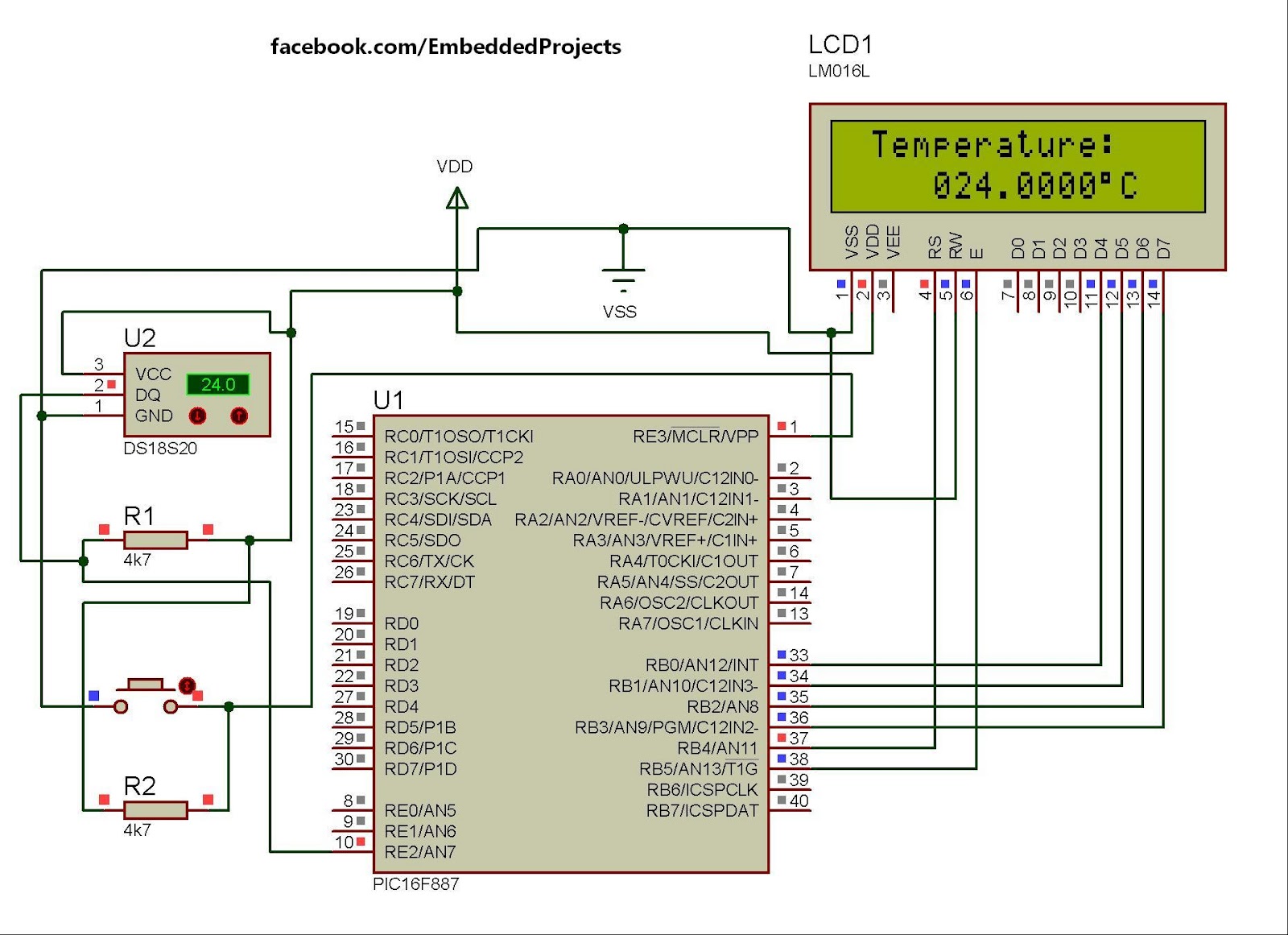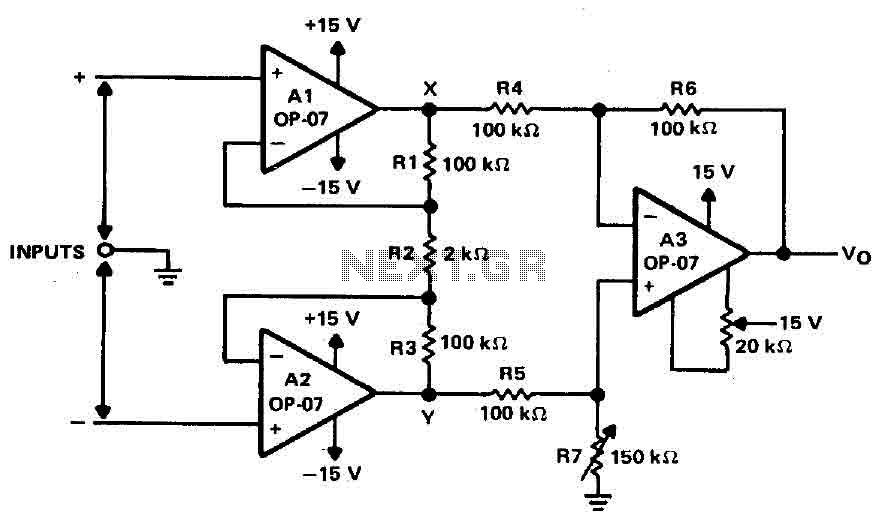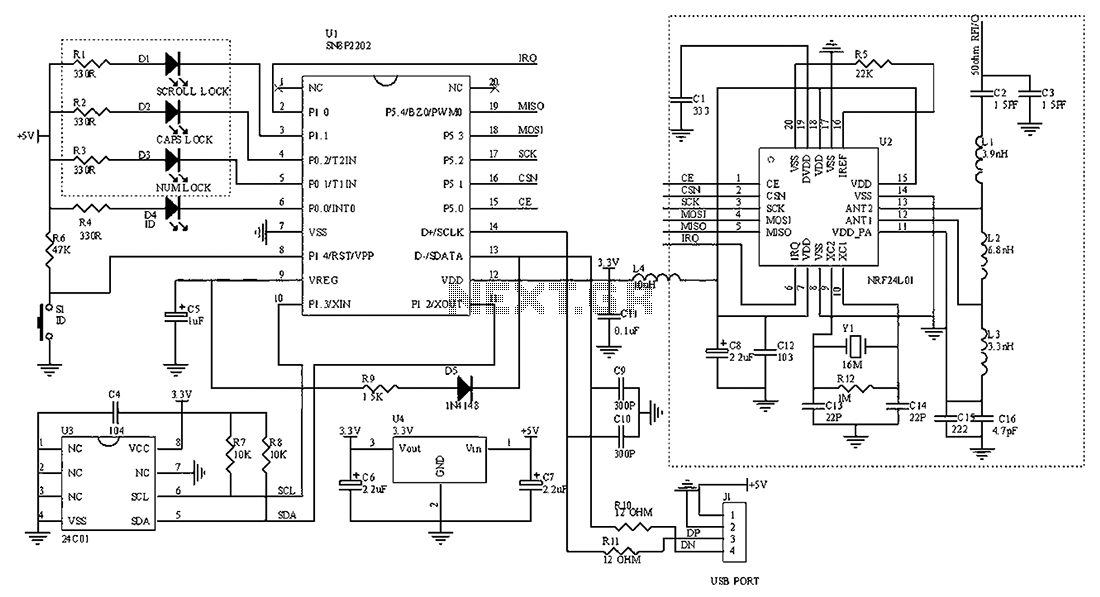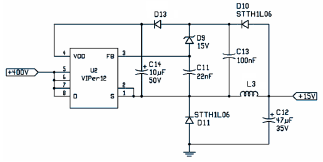
pic programmer circuit

A PIC programmer circuit that operates using long cables from a PC to the programmer.
The PIC programmer circuit is designed to facilitate the programming of PIC microcontrollers via a connection to a personal computer (PC) using extended cabling. This design allows for flexibility in the placement of the programmer relative to the PC, which can be beneficial in various testing and development environments.
The circuit typically includes a USB or serial interface that connects to the PC, providing the necessary communication protocols for data transfer. Inside the programmer, a microcontroller manages the programming sequence, ensuring that the correct voltages and signals are delivered to the target PIC microcontroller.
Key components of the circuit may include:
1. **Voltage Regulator**: To ensure that the circuit operates at a stable voltage, a voltage regulator is used. This component is crucial for protecting the microcontroller from voltage fluctuations that may occur due to the long cable runs.
2. **Signal Conditioning Circuitry**: Long cables can introduce noise and signal degradation. Therefore, signal conditioning components such as capacitors and resistors may be included to filter and stabilize the signals being sent and received.
3. **Isolation**: To protect the PC and the programmer from potential damage due to faults in the target microcontroller, isolation techniques such as opto-isolators may be implemented.
4. **Programming Interface**: The programmer will include a dedicated interface for connecting the target PIC microcontroller. This may consist of a pin header or socket that aligns with the microcontroller's programming pins.
5. **LED Indicators**: To provide visual feedback during the programming process, the circuit may feature LED indicators that signal power status, data transmission, and programming success or failure.
The overall layout of the circuit should be optimized for minimal interference and signal integrity, taking into account the potential for crosstalk and attenuation over long cable lengths. Proper shielding and twisted pair configurations may be employed in the cabling to enhance performance.
In summary, this PIC programmer circuit is a robust solution for programming microcontrollers from a distance, featuring essential components to ensure reliable operation and effective communication over long distances.A pic programmer circuit that works using long cables from PC to programmer.. 🔗 External reference
The PIC programmer circuit is designed to facilitate the programming of PIC microcontrollers via a connection to a personal computer (PC) using extended cabling. This design allows for flexibility in the placement of the programmer relative to the PC, which can be beneficial in various testing and development environments.
The circuit typically includes a USB or serial interface that connects to the PC, providing the necessary communication protocols for data transfer. Inside the programmer, a microcontroller manages the programming sequence, ensuring that the correct voltages and signals are delivered to the target PIC microcontroller.
Key components of the circuit may include:
1. **Voltage Regulator**: To ensure that the circuit operates at a stable voltage, a voltage regulator is used. This component is crucial for protecting the microcontroller from voltage fluctuations that may occur due to the long cable runs.
2. **Signal Conditioning Circuitry**: Long cables can introduce noise and signal degradation. Therefore, signal conditioning components such as capacitors and resistors may be included to filter and stabilize the signals being sent and received.
3. **Isolation**: To protect the PC and the programmer from potential damage due to faults in the target microcontroller, isolation techniques such as opto-isolators may be implemented.
4. **Programming Interface**: The programmer will include a dedicated interface for connecting the target PIC microcontroller. This may consist of a pin header or socket that aligns with the microcontroller's programming pins.
5. **LED Indicators**: To provide visual feedback during the programming process, the circuit may feature LED indicators that signal power status, data transmission, and programming success or failure.
The overall layout of the circuit should be optimized for minimal interference and signal integrity, taking into account the potential for crosstalk and attenuation over long cable lengths. Proper shielding and twisted pair configurations may be employed in the cabling to enhance performance.
In summary, this PIC programmer circuit is a robust solution for programming microcontrollers from a distance, featuring essential components to ensure reliable operation and effective communication over long distances.A pic programmer circuit that works using long cables from PC to programmer.. 🔗 External reference





